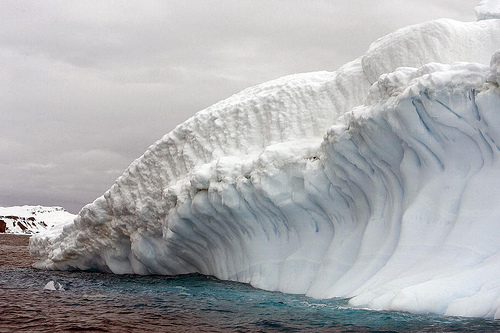A recent article in the New York Times speaks on the phenomenon of glacial melt and how it has been observed to be accelerating in recent years:
“Centuries from now, a large swath of the West Antarctic ice sheet is likely to be gone, its hundreds of trillions of tons of ice melted, causing a four-foot rise in already swollen seas.”
“Scientists reported last week that the scenario may be inevitable, with new research concluding that some giant glaciers had passed the point of no return, possibly setting off a chain reaction that could doom the rest of the ice sheet.”

Glacial melt, such as has been observed in Antarctica, is accelerating; threatening coastal areas by raising sea levels. (Image credit.)
“Furthest along in melting are the smallest glaciers in the high mountainous regions of the Andes, the Alps and the Himalayas and in Alaska. By itself, their melting does not pose a grave threat; together they make up only 1 percent of the ice on the planet and would cause sea level to rise only by one to two feet.”
“But the mountain glaciers have been telling scientists what the West Antarctica glacier disintegration is now confirming: In the coming centuries, more land will be covered by water and more of nature will be disrupted. A full melt would cause sea level to rise 215 feet.”
Those who live on coastal regions should seriously consider the implications of what is reported here and what it means for the viability of future habitation of where they live now.
Ask yourself the question: “Where should I live? ” and keep asking it periodically over time. Don’t make any rash decisions, but let the answer come to you. If a change needs to be made in where you live, you will know.
To read more about the changing world and what you can do to prepare, visit: www.greatwavesofchange.org
